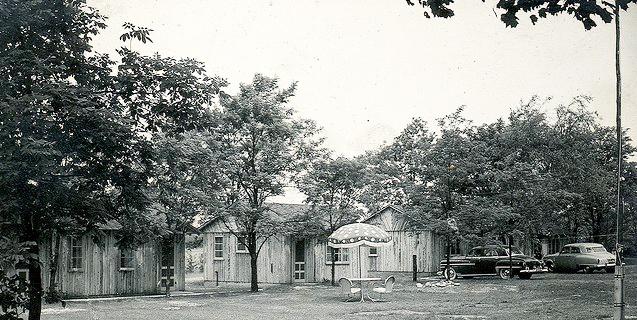By Dan Shine
Voice Columnist
Life Before the Interstate Highway System

In Connecticut, most of Interstate 95 was opened for travel on January 2, 1958; on that same day, construction of Interstate 91 was just beginning. Prior to the completion of these limited access highways, travelers chose between the Merritt-Wilbur Cross Parkway, and what we today call “secondary roads.” It is this writer’s hope that the following will bring back some memories for our older readers, or offer the younger reader an insight into travel in a different era.
July, 1958
It was summertime, and for the boy, the Big Day had arrived: mother and father were taking their kids to a place called Benson’s Wild Animal Farm, which was located in some faraway place called New Hampshire. Reaching their destination would take a long day of driving, as he had been told.
By the time breakfast was finished, father had loaded the Plymouth, and they were on their way. The Plymouth had no seat belts and no radio, but the boy didn’t need a radio, or know anything about seatbelts. All he knew was that travel was exciting.
They left Kelsey Avenue and turned right at the Armstrong building. Elm Street took them to the humming drawbridge at Kimberly Avenue, and then on past Union Station.
The Plymouth then passed through downtown New Haven where in those days Route 10 began. Then they passed Peabody Museum, where the boy went on rainy days to look at dinosaur bones with his parents. Traffic signals were few in New Haven in those times, and as they left the city, they saw less homes and less traffic. Whitney Avenue took them past Sleeping Giant, and mother told the children the scary legend of Hobbomock, the evil giant who had been placed under a spell to sleep forever.
Now, they passed through small towns and farms, barely stopping for miles, for such was the way of auto travel in 1958. Every few hours, they’d stop for a stretch or a snack or for lunch, wherever a picnic table had been left for travelers, under the shade of a tree or in a grassy area along Route 10. Out of the trunk would come a wicker basket with sandwiches, cookies and a thermos of milk.
There were friends and family to visit along the way: Mrs. Butterfield, a stumpy little woman in a flowered dress, impossibly old at the age of eighty, and then came a stop at their aunt and uncle’s dairy farm up in the shadow of Mount Tom. While the adults had coffee, the boy went out to the barn, to visit the cows and play in the hayloft. Finally, his play was interrupted by father’s voice calling him from the porch of the farmhouse: it was time for them to be on their way.
As they drove along, they sang songs like B-I-N-G-O and Row, Row, Row Your Boat, and they counted cars and played games, for families traveled differently in those days before in-car video machines. Finally, they crossed the Connecticut River, and soon mother announced that they were in New Hampshire.
Now the sun was sinking low, and evening was nigh at hand. The Plymouth turned left into a gravel parking lot, behind which stood a neat row of whitewashed cabins, which were so common in that era. There was a swing set and a see-saw to occupy the children as mother and father unloaded the Plymouth and prepared sandwiches for dinner.
It was a simpler time. It was a time before Howard Johnsons and McDonalds. And it was a time before families boarded jets and flew to a tropical paradise called Florida, to visit the home of a large mouse. Indeed, the children of that era were almost unaware of Walt Disney, and the very thought of air travel would have seemed impossible to them anyway. Since that day, vacation travel has come a long, long way; but for all our gains, the simple charms of that long-ago trip stand out in the boy’s memory like precious treasures that are lost and gone forever.